Secret Agent - Part 2
Continuing Julliette Pattinson’s recounting of Yvonne Baseden’s story as an SOE secret agent during World War II.
See part 1 here
Their first attempt to get to France was unsuccessful:
It took hours. We were all lying in this aircraft, you know on the bare metal and we could hear a lot of banging going on. We couldn’t see a thing. Then the dispatcher used to come round and say “twenty minutes” or just “are you ok?” or whatever. Eventually, it must have been a couple of hours later, we were told we were nearing the ground so we got ready and they opened the hole in the bottom of the aircraft and I sat with my legs down there and we went round and round and round and round. Then we saw a few lights and we thought “oh that must be it” and we went round and round and round and the dispatcher said “I’m sorry, we’re going to have to go back. We haven’t got the right signal.” It was a terrible let down.
Their second attempt a fortnight later was successful however and they parachuted into Auch, just north of the Pyrenees, on 18 March 1944:
This time all went well. Parachuted into very warm air. It was wonderful when we jumped because we had been frozen in that aircraft and it was so mild outside.
Upon landing, she quickly gathered and then buried her parachute as she had been trained to do. ‘Lucien’ had landed some distance away from her and, hearing muffled voices and heavy boots coming towards her, she drew her pistol in case they were German soldiers. Indeed, one woman and several male agents dropped to German-controlled reception committees and were immediately arrested. Yvonne, however, was greeted by several Frenchmen, given a bicycle and was taken to a farmhouse. She then embarked on a two-day journey from Auch to Döle near the Swiss border where she was to be based with ‘Lucien’. Together, they were to form the ‘Scholar’ circuit.
As the only means of communication between Britain and their resistance circuit in Döle, she was an important part of the group, tasked with sending coordinates for suitable dropping grounds and making requests for weapons. The average life of a wireless operator was just six weeks and it was a highly-dangerous role. Many operators were arrested at their sets, their locations having been pin-pointed by the Gestapo’s direction-finding technology. In addition to working the radio, Yvonne also helped train the men, showing them how to set an explosive charge. This was especially important around D-Day: ‘We had been told previously that only when we got that particular message could we blow up this and that, which included a railway line and a canal.’ The sabotage of bridges, roads, railway lines and communications undertaken by various resistance circuits considerably delayed German troops getting to the Normandy beaches. A two-day journey from southern to northern France took up to a fortnight which meant that the Allied soldiers faced fewer troops which undoubtedly saved many lives and possibly shortened the war by several months.
Their group was chosen to receive the first daylight drop of arms, codenamed ‘Operation Cadillac’. On the morning of 26 June, Yvonne sat in a ditch in the dropping ground with her wireless set and established contact with Britain, while 800 armed men from various local resistance groups were waiting to collect the canisters as they parachuted down. She remembers vividly the excitement they all felt as the planes flew overhead: ‘I was jumping around, waving madly to them!’ Although the operation was a success, the day ended disastrously when German soldiers interrupted their celebratory lunch at their safehouse, a cheese depot. They rushed to various hiding places: ‘Lucien’ hid in the false ceiling, while Yvonne and a colleague concealed themselves in one of the spaces between the huge wooden circular stacks, pushing some planks of wood across to cover them. The caretaker’s wife cleared away the crockery and cutlery, but the bicycles outside raised suspicions and two guards remained behind:
For hours we were all hiding and I was hoping that it would get dark so that some of us would be able to get away, and then the cistern in the loo started rumbling and so immediately the German who was on sentry duty rushed up and had a look around. He phoned the others and said “I’m sure there’s someone here”. Back they came and started shooting through the gaps in the round wooden stacks of cheese and the ceiling. And blood started dripping. It was ‘Lucien’ of course, unfortunately. So they found his body upstairs. We waited and we heard people being found and they started shooting again through these gaps.
‘Lucien’ had probably taken his cyanide pill after being shot. Having been a prisoner of the Germans before, he was unwilling to be recaptured and had told Yvonne that he would take his own life if threatened with arrest. The planks of wood were moved and Yvonne’s hiding place was revealed. She was pulled out by her hair, punched in the face and manacled.
Yvonne reflected on the day that she was arrested:
There was a thunderstorm, lightening. It was quite extraordinary. At least all that equipment had been distributed. For me, as a general reaction, I was thrilled because I had done what I wanted to do and I knew I was there because I had done that, so I had a reasoning, and I thought of all these other people who had been shopping in the street and all been rounded up, and therefore I had really nothing to moan about. Later on at the camp, I can’t say that I felt differently ever.
They were taken to Döle prison and transferred two days later to Dijon where Yvonne was placed in solitary confinement in cell number 111 on the third floor. She was regularly interrogated but revealed nothing. Unfortunately, one of the others also arrested told the Gestapo that Yvonne was the circuit’s wireless operator and was probably a British agent. She continually denied this, pretending that she was just an ordinary French woman who had become involved with the Resistance and stated that she had no idea about how to contact Britain. To try to get her to cooperate, she was beaten up, her bare feet were stamped on and she was intimidated:
They took me down to the cellar and left me there for about two days in the dark and then two officers came in and they said “are you going to tell us how to use the radio” and I said “no” and one of them started shooting at my feet. They got me in the corner and he started with this revolver shooting around my feet. And the other stopped him.
She found a sliver of glass in the cellar and tried to cut her wrists so that she would be admitted to hospital from where there might be an opportunity to escape. Her attempt was unsuccessful and she was taken through an office on her way back to her cell:
By then I wasn’t walking very well, dragged up two floors, back into an office, and it was so crazy to go through an office where there were people typing. There were four or five German women in uniform nattering away in the corner and two other men talking there and they didn’t even look up! Or turn around! You know, it was all normal to see someone in the state that I was in.
Orders came through to deport Yvonne and she was taken by train to Germany. She was first sent to Saarbruck concentration camp where to her horror she encountered fellow SOE agents Violette Szabo, Lilian Rolfe and Denise Bloch whose feet had been manacled. She was then taken to Ravensbrück, a women’s camp near Berlin, where several SOE women were incarcerated. Originally built in 1939 to house 900 prisoners, the camp rapidly expanded and at the time of the camp’s liberation in April 1945, up to 45,000 were imprisoned there. Yvonne recalled her arrival at the camp:
The procedure for being accepted at Ravensbrück – you went with the other women to the shower room and then you stripped and then you were passed onto another bunch of these German women, and there were stacks of clothes in that one big room and you were just dished out enough to cover yourself with. I was never tattooed. And my head wasn’t shaved either. My number was 62,947. We were all in blocks of three-tiered bunks all pushed together, so we had to crawl in, I was up on the top tier. And we lived in the clothes we had on. You only thought day-to-day and what you were going to be able to find to eat. Because we had a crust of brown bread in the morning and in the evening, that was all practically.
The caretaker’s wife who had been arrested with Yvonne was released from the camp in January 1945 as she was a Swiss national. She was able to notify SOE that Yvonne was still alive and a letter was sent by the War Office to Yvonne’s father informing him of his daughter’s arrest.
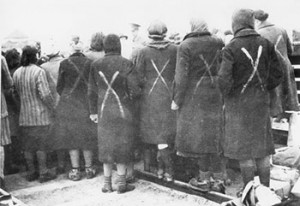
Female inmates of Ravensbrück concentration camp. The white chalk cross on their backs indicates that they had been selected to leave the camp with the Swedish Red Cross just prior to the liberation of the camp by Soviet forces.
Image by permission of the Swedish Red Cross.
Yvonne undertook a variety of jobs in the camp during the eight months she was incarcerated there. On one occasion, she had to unload goods from a train. A pillow she was carrying split and a feather landed on the uniform of a guard. As he raised his truncheon to strike her head, a fellow prisoner pushed her out of the way. She was hit on the thigh instead which undoubtedly saved her life. Overworked, starved and mistreated, Yvonne’s health unsurprisingly began to deteriorate and she was admitted to the sick block. Few inmates were discharged from the hospital as there was no medicine and Nazi doctors often experimented upon the patients. Yvonne was fortunate in that she had befriended Mary Lindell, a middle-aged British heiress, the Comtesse de Milleville, while in Dijon prison. Lindell was a member of MI9, a British escape organisation, and established the ‘Marie-Claire’ line which helped hundreds of downed Allied airmen to return to Britain. Mary Lindell worked as a nurse in the hospital and cared for Yvonne.
Ravensbrück was liberated on 30 April 1945 by the Russian army. Yvonne recalled: ‘We heard big guns for days and we thought “oh well tomorrow they’ll be at the door” and it went on and on and so everybody was getting a bit depressed.’ As a result of the intervention of Count Bernadotte, certain nations were permitted to leave the camp just days before its liberation. Mary Lindell ensured that Yvonne was on the convoy run by the Swedish Red Cross. She was taken to Sweden and was then flown back to Britain. She made her way to London for an emotional reunion with her parents. In the final instalment of three articles that she wrote for the Sunday Express in 1952, Yvonne noted: ‘I came home to England on a Saturday afternoon. Before me lay nine months in hospital, a lung operation, pain, and nights tormented by fearful dreams.’ She had contracted TB and had an operation to remove an abscess on her lung. After her discharge, Yvonne returned to the WAAF to interpret aerial photographs and was demobbed in 1948 when she married. En route to Northern Rhodesia in 1949 to begin a new life, a manuscript that she had written chronicling her wartime experiences was lost and she did not attempt to write down her experiences again.
Yvonne was awarded an M.B.E., a Legion d’Honneur, a Croix de Guerre avec Palme and a Croix de Combattant Voluntaire de la Résistance for her work with the SOE. Despite the organisation’s ground-breaking decision to involve women, Yvonne regarded her participation as commonplace and unspectacular:
I did think that it was some form of proof that women could do these sorts of jobs more or less successfully. I thought it was quite a normal step forward for women.
Yvonne and the other SOE women undoubtedly paved the way for women’s more active involvement in military operations today.
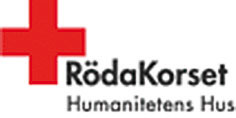 Humanitetens Hus or ‘House of Humanity’in Malmö, Sweden The Ravensbrück image above is from a collection held at Humanitetens Hus, a national centre for humanitarian issues which belongs to the Swedish Red Cross. The Centre runs seminars and exhibitions and is a meeting point for people who want to discuss humanitarian subjects. Humanitetens Hus hosts a permanent exhibition on ‘The White Bus’. The ‘White Bus operation’ was a Swedish Red Cross rescue mission that saved thousands of lives during World War Two. Thirty six buses, and other vehicles, drove across Europe towards the end of the War and rescued over 17 000 individuals (mostly Jews) from different concentration camps. Only five buses are left and one of these is the centre piece of the exhibition in Malmö. You can find out more about Humanitetens Hus by visiting www.humanitetenshus.se
Humanitetens Hus or ‘House of Humanity’in Malmö, Sweden The Ravensbrück image above is from a collection held at Humanitetens Hus, a national centre for humanitarian issues which belongs to the Swedish Red Cross. The Centre runs seminars and exhibitions and is a meeting point for people who want to discuss humanitarian subjects. Humanitetens Hus hosts a permanent exhibition on ‘The White Bus’. The ‘White Bus operation’ was a Swedish Red Cross rescue mission that saved thousands of lives during World War Two. Thirty six buses, and other vehicles, drove across Europe towards the end of the War and rescued over 17 000 individuals (mostly Jews) from different concentration camps. Only five buses are left and one of these is the centre piece of the exhibition in Malmö. You can find out more about Humanitetens Hus by visiting www.humanitetenshus.se




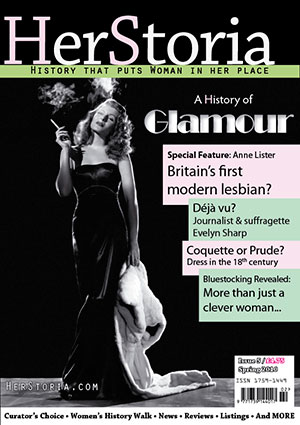
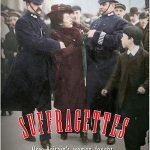


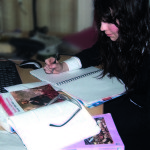
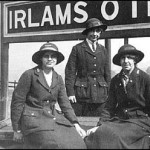
Leave a Reply